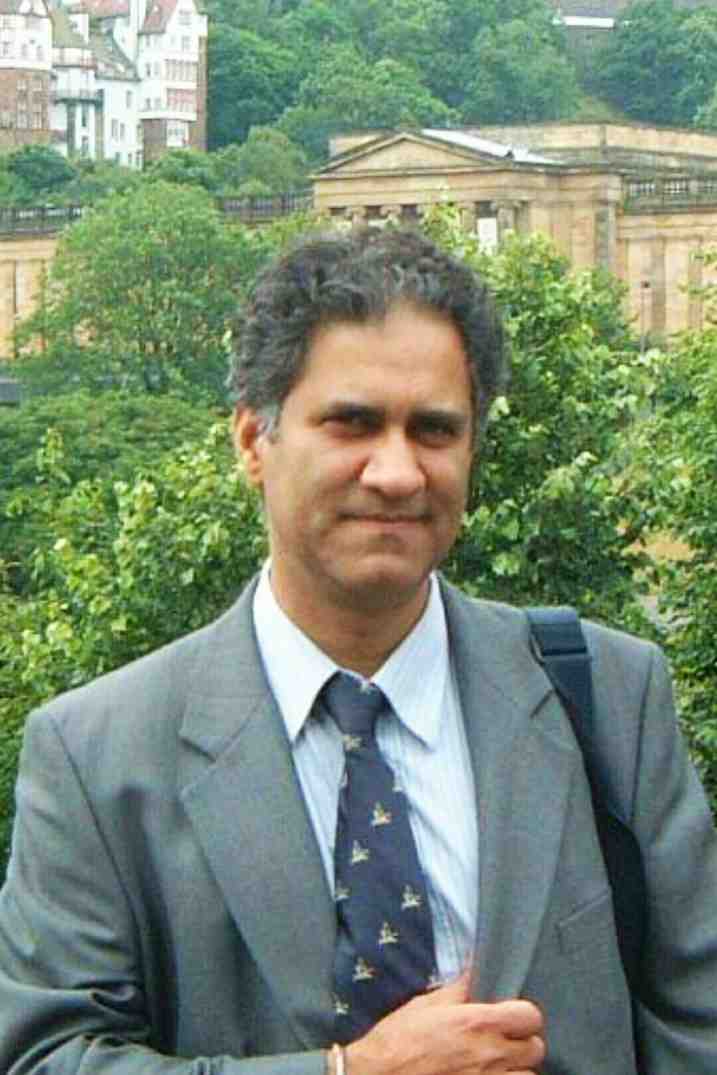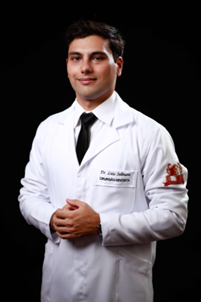AUCTORES
Globalize your Research
Research Article | DOI: https://doi.org/10.31579/2690-1919/500
*Corresponding Author: Tania Leme da Rocha Martinez, Rua Comandante Ismael Guilherme, 358 - Jardim Lusitânia, 04031-120 - São Paulo – SP, Brazil.
Citation: Carlos Alberto Almeida de Moraes, (2025), Metabolic and Weight Effects in Acute Lifestyle Changes, J Clinical Research and Reports, 18(4); DOI:10.31579/2690-1919/500
Copyright: © 2025, Tania Leme da Rocha Martinez. This is an open access article distributed under the Creative Commons Attribution License, which permits unrestricted use, distribution, and reproduction in any medium, provided the original work is properly cited.
Received: 06 February 2025 | Accepted: 12 February 2025 | Published: 21 February 2025
Keywords:
The aim of this study was to evaluate clinical and laboratory results found in the database of an institution for the prevention, promotion and recovery of health. Clinical and laboratory parameters were observed during the examination of 458 medical records of patients who underwent a clinical program of acute lifestyle intervention, and what changes were produced by this treatment. The clinical parameters evaluated were body weight and waist circumference. In the statistical analysis, with statistical significance (p<0.05), there was an improvement in the biochemical indices studied in both groups, especially in the group with longer permanence, improvement in body weight, and there was also a significant improvement (p<0.05) in those with metabolic syndrome, among whom approximately 36% no longer had this condition. Acute lifestyle intervention reduced or reversed risk factors for coronary artery disease and the presence of metabolic syndrome.
HDL: High Density Lipoprotein
LDL: Low Density Lipoprotein
This study presents the results of laboratory and anthropometric changes found in a series of patients submitted to what we call "Acute Lifestyle Intervention", under hospitalization in an institution for prevention, promotion and maintenance of health. It intends to offer the possibility of a new form of therapeutic approach that seeks to implement changes in the patients' lifestyle through short and repeated interventions, aiming to restore to them the natural capacities and qualities of organic-physiological regulation.
Lifestyle is an expression that encompasses a huge range of behaviors and attitudes of an individual, or of a society. Cultural, social, psychological, genetic, environmental, educational, historical, geographical, political, media, market, and other factors combine and have the power to boost or induce the behavior of human beings, leading them to make choices and options that are often automatic and unreflective. In a certain aspect, subtracting from this being the attribute that makes it so prominent in the history of life: free will. In the evolution of life, the human being has been supplied with a specialized capacity, superimposed on that of any other species, which is to interact with the environment, his fellow beings and other species, to form his own judgment about himself and these relationships, being able to decide on which behaviors suit him and follow them, or not, if he so wishes.
However, in the last century, with the advent of factors and trends such as economies of scale, market economy, consumer society, social urbanization, among others, human beings have adopted a lifestyle that puts their health and life itself at risk, creating environmental conditions for genes that were previously inexpressible to have an expression that was inappropriate for life.
In this way, we often find ourselves taking actions, making choices that we cannot reflect on. So, we become a society that ingests alcohol in excess, that becomes addicted to habits such as smoking, that acquires products without awareness of the harms, and even the benefits they can bring, that eats food of poor quality and in unthinkable quantities.
Thus, this society has become hypertensive, obese, diabetic, dysmetabolic and atherosclerotic.
In view of this finding, it is essential that, in addition to technological development to support and treat human health problems, the scientific and academic communities are willing to study the theme and propose conducts, policies, helping to shape lifestyles in human societies that are adequate to life.
Several observations have been made since the 1970s, which clearly demonstrate the relationship between lifestyle habits, such as diets, and the incidence of degenerative diseases and mortality from cardiovascular diseases. As published in 1979 by Levy et al.: "Nutrition, Lipids and Coronary Heart Disease" based on data collected in twenty countries, the correlation between mortality from coronary artery disease and calorie intake from various types of food was strongly positive when such calories were extracted preferably from foods such as: butter (0.546), eggs (0.592), beef and poultry (0.501), sugar (0.676) and negative when coming from grains, fruits, vegetables and legumes (-0.633). In other words, as the percentage of calories extracted from plant foods increased, the mortality rate from coronary heart disease decreased, based on data collected in twenty countries [1].
Results of several studies carried out, such as: Seven Countries, Eighteen Countries, Twenty Countries, Four Countries and Ni-Hon-San Studies, demonstrated that populations with high intakes of total fat, saturated fat, cholesterol, and sugar in the diet, had increasing mortality rates from cardiovascular disease, as well as high prevalence of obesity, hypercholesterolemia and diabetes mellitus. The reverse also proved to be true.
In Brazil, understanding the problem that inadequate lifestyle habits produce in terms of morbidity and mortality, and following the guidance of the Third National Cholesterol Education Program (NCEP) - Adult Treatment Panel III (ATP III) [2], the Brazilian Society of Cardiology, through the Department of Atherosclerosis, as published in the Update of the Brazilian Guideline on Dyslipidemias and Prevention of Atherosclerosis - 2017 [3], it recognizes the important role of lifestyle modification as a fundamental measure in the prevention and treatment of dyslipidemias, atherosclerosis and obstructive arterial diseases, recommending efforts to achieve the establishment of lifestyle habits that are more appropriate to health.
Aims:
In view of the great need for approaches that guide and support individuals and society in the adoption of lifestyles that modify the current trends of deterioration of health, especially in the cardiovascular system, and considering the form of action of the Lapinha Medical Spa model (Paraná, Brazil), this study aimed to observe how the acute action in lifestyle modification could influence the metabolic and clinical aspects of the individuals submitted to the cardiovascular system and to question whether acute and repeated interventions can cause changes in the behavior of individuals in the medium and long term.
Literature review:
The following are recognized as risk factors for arterial atherosclerosis and obstructive arterial disease: 1) dyslipidemia; 2) diabetes mellitus; 3) smoking; 4) systemic arterial hypertension; 5) age greater than or equal to 45 years for men and equal to or greater than 55 years for women, and 6) history of atherosclerosis in a first-degree relative, less than 55 years for men and less than 65 years for women. This definition is approved by the Brazilian Guidelines on Dyslipidemias and the Guideline for the Prevention of Atherosclerosis of the Department of Atherosclerosis of the Brazilian Society of Cardiology [3]. Conditions such as: elevated plasma homocysteine levels; changes in coagulation factors, such as increased plasma fibrinogen; increased plasma level of ultrasensitive C-reactive protein; sedentary lifestyle and obesity.
Among the six patent risk factors, four of them are related to society's way of living (lifestyle). They can be triggered, maintained or even aggravated by the attitudes taken by the human being and his modus vivendi. Thus, habits such as smoking, excessive salting, processed foods or excess carbohydrates and/or fats can accentuate individual tendencies of onset and progression of arterial atherosclerosis, which has long been recognized as a primary factor in the development of most obstructive arterial diseases and, consequently, the main responsible for mortality in Western societies [4,5,6].
Long-standing data available, such as: 1) individuals, even if they are intense smokers, have reduced their risk of experiencing coronary events by half when they have abolished the smoking habit when compared to those who have not [7,8]; 2) for each plasma increase of 10 mg/dl in total cholesterol, there is a 9% increase in cardiovascular mortality and a 5% increase in overall mortality [4,5], or even, mortality due to coronary artery disease was almost four times higher in individuals whose total cholesterol was 264 mg/dl, when compared to those who maintained the level at up to 182 mg/dl [9,10]; 3) the 6 mmHg decrease in blood pressure was accompanied by a reduction in the risk of stroke and coronary events by 42% and 24%, respectively, both conditions being strongly linked to arterial atherosclerosis [11,12,13]; and, finally, 4) the role of diabetes in the production and progression of atherosclerosis, as well as the disturbance in glucose metabolism called insulin resistance or glucose intolerance [5,14], clearly demonstrate the role of lifestyle habits in the genesis of atherosclerotic disease and its potential preventability.
Obesity, especially in its abdominal or visceral form, is closely related to three of the four factors mentioned above, namely: dyslipidemia, hypertension and diabetes. Although it is not recognized as a risk factor (causal agent) but as a risk marker (associated with higher risk, but without established causality), obesity, due to its relationship with factors that have well-established causality, plays an important role in the genesis, maintenance and progression of atherosclerosis and its consequences [15].
Weight gain has been considered a public health problem worldwide, not exempting rich countries or those considered "developing", such as Brazil. In the United States, in the 1960s, the prevalence of obesity was 24%, while in the 1990s this prevalence jumped to 35%. In Brazil, data from the Ministry of Health indicate a prevalence of 32% for overweight and 8% for obesity [16,17].
According to observations and recommendations from the US National Heart, Lung, and Blood Institute, all people with a body mass index greater than or equal to 25 kg/m.m (weight, in kilograms, divided by the square of the height, in meters) are at increased risk of cardiovascular disease [5]; the mortality rate increases exponentially as the body mass index exceeds 30, the point that delimits the conditions of overweight and obesity [17]. The simple measurement of abdominal circumference, which should be taken at the height of the umbilical scar, with the patient in an upright position and at the end of expiration, stands out as a qualifier of weight and/or fat concentration. This measurement indicates an increased risk for high blood pressure, diabetes mellitus, dyslipidemia and cardiovascular disease in men when greater than 94 cm and a much greater risk when greater than 102 cm; and in women, an increased risk for measurements greater than 80 cm and a much greater risk when greater than 88 cm.
More recently, the conjunction of multiple conditions that confer a higher risk of atherosclerosis and obstructive arterial diseases has been recognized, whose most accepted name is Metabolic Syndrome, having in the recent past received several names, according to the authors who described it: Plurimetabolic Syndrome (Crepaldi), Syndrome X (Reaven), Insulin Resistance Syndrome (De Fronzo and Haffner), Mortal Four (Kaplan).
An individual is recognized as having Metabolic Syndrome [2] when he or she has three or more of the factors listed in the table below:
| METABOLIC SYNDROME | |
| DIAGNOSIS WITH THREE OR MORE OF THE CRITERIA BELOW | |
| Risk Factor | Defined Levels |
Abdominal circumference Male Female |
> 102 cm > 88 cm |
| Triglycerides | ≥ 150 mg/dL |
HDL cholesterol Male Female |
< 40> < 50> |
| Blood pressure | ≥ 130 / ≥ 85 mmHg |
| Fasting glucose | ≥ 110 mg/dL |
Source: Third National Cholesterol Education Program - Adult Treatment Panel III, 2001 [2].
The literature has presented successful attempts to modify lifestyle by positively altering the natural history of diseases, as well as preventing the emergence of others. Some publications clearly demonstrate the benefits of lifestyle interventions in diverse populations and in the most varied settings [18,19,20].
In 2002, Knowler et al. published the results of a clinical trial in which 3,234 individuals with alterations in fasting and postprandial blood glucose, but not diabetic, overweight or obese, were randomized to the following interventions: use of placebo and mild lifestyle intervention; use of metformin and the same lifestyle changes; and a third group in which only an intense lifestyle intervention program was established. The results achieved, after two years and ten months, on average, demonstrated established diabetes incidences of 11%, 7.8%, and 4.8%, respectively for the placebo, metformin, and lifestyle intervention groups. To prevent a case of diabetes mellitus, 6.9 people had to be treated intensively for lifestyle habits, and 13.9 people using metformin. The incidence of diabetes was 58% lower in the intense modification group, and 31% lower in the group using metformin, when compared to the placebo group. And finally, the incidence of diabetes was 39% lower in the lifestyle intervention group than in the metformin group [21].
The reported data are in line with others previously presented in similar trials conducted in China and Finland [22,23]. Stampfer et al. reported results from the follow-up of approximately 84,000 women, from 1980 to 1992, in which there was a clear relationship between lifestyle changes and decrease or increase in coronary heart disease, depending on the content of the changes [24]. Smoking cessation explained a decrease of 13%, the improvement in diet quality caused a decrease of 16%, while the increase in body mass index beyond 25, which had occurred in 38% of the participants, increased the incidence of the disease by 8%.
It was also found that 82% of the coronary events that occurred in the reported period, which totaled 1,128 cases, were related to non-adherence to the recommended lifestyle program, which consisted of using a diet rich in cereal fiber, Omega-3 fatty acids, folate, prevalence of polyunsaturated fatty acids over saturated ones, regular exercise for at least 30 to 60 minutes a day, and abstention from smoking.
A lifestyle intervention study conducted in Finland by Tuomilehto et al., involving 522 individuals with obesity and glucose metabolism disorders (glucose intolerance), was efficient in preventing the onset of diabetes mellitus in the group randomized to intervention: at the end of four years of follow-up, the incidence of diabetes was 11% in this group and 23% in the control group. A 58
Lapinha Medical Spa is a clinical, prevention, promotion and restoration of health institution operating since 1972, in the municipality of Lapa, Paraná, Brazil. Its mission is: "to provide integral health through natural processes, using modern therapeutic techniques, personalized medical care programs, services, information and products specially developed for an adult audience".
In a rural environment, it offers a type of care that has been notable in several countries of central Europe since the first half of the last century, and which aims to reestablish in individuals a more natural lifestyle that is appropriate to the maintenance of vital functions. It aims to provide clinical improvement in the short term and establish healthy lifestyle goals in the medium and long term.
Its intervention is based on the placement of individuals in a program of directed and controlled habits:
Patients who undergo this program are monitored by a multidisciplinary team composed of doctors, nutritionist, physiotherapist, physical educators and advisors.
The immersion in the "Lapinha lifestyle" takes place in a minimum period of one week, with a stay of three weeks being indicated as ideal.
After the intervention periods, patients receive a formal recommendation on how to add behaviors that replace those identified as undesirable.
During the immersion, in which the experience lived is evaluated as positive, restorative and recuperative, individuals receive information that complements a pedagogical cycle. It is learning through the binomial: experiential experience and conceptual sedimentation.
Laboratory data and clinical parameters from the Lapinha Medical Spa database were evaluated in two distinct series.
In the first of them (Group I), 262 medical records of patients who underwent laboratory tests were selected. A total of 83 patient records with incomplete data were excluded, and 179 remained in the final sample, on which the observations were made. In this first sample, we studied biochemical changes (total cholesterol, low-density lipoprotein fractions - LDL and high-density lipoprotein -HDL cholesterol, triglycerides, uric acid) and clinical changes (changes in weight, body mass index, blood pressure). The medical records were selected from among those of patients who had seven days of treatment at the clinic in a period of one year.
Also in the first group, individuals who, during the period comprised, underwent the proposed treatment more than once, were identified, and the evolution of body weight was verified on them.
In the second sample (Group II), 332 medical records of patients who remained in treatment for ten days or more (mean of 14.27 days) were selected, and 53 of these were cleared because they did not present laboratory tests at entry and exit, thus resulting in 279 medical records on which statistical studies were established. In this second series, biochemical observations were made (total cholesterol and its HDL and LDL fractions, triglycerides and uric acid) and anthropometric data were collected. Individuals classified as having metabolic syndrome were identified in this second group, and the evolution of this condition was observed over the period. In this group, the medical records were selected from among patients who had been undergoing treatment for a period of three years.
The biochemical parameters: total cholesterol, HDL-cholesterol, triglycerides, glycemia and uric acid were determined by enzymatic method. The LDL fraction of cholesterol was determined by Friedewald's formula [39].
The sample for examination was collected fasting, on the morning of the first day of the intervention and on the last day of the stay.
For the determination of Metabolic Syndrome, the criteria determined by the Executive Summary of the Third Report of the National Cholesterol Education Program Expert Panel on the Detection, Evaluation and Treatment of High Blood Cholesterol in Adults (Adult Treatment Panel III) were used [3].
Since it was impossible to collect all the clinical parameters in the two samples, this study was not willing to perform qualitative comparisons of those parameters between the different groups, and these comparisons were made regarding the biochemical data, namely: fasting glucose, total cholesterol, LDL and HDL-cholesterol fractions, triglycerides and uric acid, and comparisons were made between Group I, the one in which the patients remained seven days in the program, and Group II, the one in which the patients remained at least ten days in the lifestyle intervention program.
The results of the statistical study of plasma glucose in the two Groups (I and II) at the time of entry and exit are presented in Table 1.
Through the analysis of variance with repeated measures, we observed that the groups did not present a difference in behavior (p=0.9771), did not differ in relation to their means in the pre and post (p=0.9114). The two groups decreased significantly over the course of the evaluations (p<0>GROUP N Obs Variable N Average Standard deviation Minimal Maximum ≤ 7 days 178 GLIC_1 178 90,37 27,16 71,00 351,00 GLIC_2 178 84,56 14,22 70,00 212,00 ≥ 10 days 312 GLIC_1 312 90,53 23,09 61,00 258,00 GLIC_2 312 85,37 18,25 55,00 194,00
Table 1: Comparison of Groups I (≤ 7 days) and II (≥ 10 days) regarding the study of plasma glucose level.
*: Variable parsed with log transformation.
Tables 2 to 4 present the results of the study of plasma cholesterol and its HDL and LDL fractions, in the two Groups (I and II), at the time of entry and exit.
| GROUP | N Obs | Variable | N | Average | Standard deviation | Minimal | Maximum |
| ≤ 7 days | 179 | COL_1 | 179 | 226,30 | 36,38 | 144,00 | 419,00 |
| COL_2 | 179 | 215,13 | 33,95 | 144,00 | 411,00 | ||
| ≥ 10 days | 312 | COL_1 | 312 | 227,34 | 43,88 | 120,00 | 369,00 |
| COL_2 | 312 | 206,08 | 38,82 | 107,00 | 321,00 |
Table 2: Comparison of Groups I (≤ 7 days) and II (≥ 10 days) regarding the study of the plasma level of total cholesterol.
*: Variable parsed with log transformation. Through analysis of variance with repeated measures, we observed that the groups presented a difference in behavior (p<0>
The ≤ 7-day group decreased significantly (p<0>
Through the analysis of variance with repeated measures, we observed that the groups did not show any difference in behavior (p=0.8816), did not differ in relation to their means in the pre and post (p=0.4664). Both groups grew significantly over the course of the evaluations (p<0>
Through the analysis of variance with repeated measures, we observed that the groups presented a difference in behavior throughout the evaluations performed (p<0>
Table 5 shows the relative variation in plasma LDL-cholesterol levels between the two groups (I and II).
Analyzing the delta % variation using the non-parametric Mann-Whitney test, we observed that the 10-day group had a significantly higher delta decrease than the 7-day group (p<0>GROUP (I) ≤ 7 DAYS Variable N Average Standard deviation Median Minimal Maximum LDL 175 -6,70093 7,50893 -6,42202 -39,68254 42,88793 GROUP (II) ≥ 10 DAYS Variable N Average Standard deviation Median Minimal Maximum LDL 300 -10,4533 14,69108 -8,61511 -64,03846 48,62385
Table 5: Variation of LDL cholesterol between Groups I (≤ 7 days) and II (≥ 10 days) relative to the percentage delta (LDL2-LDL1)/LDL1*100).
Table 6 presents the statistical results of plasma triglyceride levels at the entry and exit times of the two groups studied (I and II).
Through analysis of variance with repeated measures, we observed that the groups presented a difference in behavior (p<0>
The 7 ≤ day group decreased significantly (p<0>GROUP N Obs Variable N Average Standard deviation Minimal Maximum ≤ 7 days 179 TRIG_1 179 163,93 51,56 106,00 402,00 TRIG_2 179 149,15 45,14 56,00 356,00 ≥ 10 days 312 TRIG_1 312 168,83 79,33 67,00 739,00 TRIG_2 312 139,53 87,96 60,00 1326,00
Table 6: Comparison of Groups I (≤ 7 days) and II (≥ 10 days) regarding the study of plasma triglyceride levels.
*: Variable parsed with log transformation.
Table 7 shows the variation in plasma uric acid levels in the two Groups (I and II).
| GROUP | N Obs | Variable | N | Average | Standard deviation | Minimal | Maximum |
| ≤ 7 days | 179 | AC_UR1 | 179 | 5,56 | 1,18 | 3,50 | 8,70 |
| AC_UR2 | 179 | 5,30 | 1,12 | 3,30 | 8,10 | ||
| ≥ 10 days | 312 | AC_UR1 | 312 | 5,52 | 1,35 | 2,60 | 9,50 |
| AC_UR2 | 312 | 5,07 | 1,28 | 2,30 | 8,30 |
Table 7: Comparison of Groups I (≤ 7 days) and II (≥ 10 days) regarding the study of the plasma level of uric acid.
*: Variable parsed with log transformation
Through analysis of variance with repeated measures, we observed that the groups presented a difference in behavior (p<0>
The 7 ≤ day group decreased significantly (p<0>
Table 8 presents the statistical study of the evolution of body weights presented by patients in group I (≤ 7 days) in successive admissions. We observed that there was a significant change in weight throughout the evaluations. There was a significant decrease between Entry 1 and Exit 1 (p<0>
| Weight | N | Average | Standard deviation | Minimal | Maximum | Median | p* |
| Entry 1 | 121 | 79830,58 | 17287,90 | 51800 | 134000 | 76700,00 | |
| Exit 1 | 121 | 76651,24 | 16201,68 | 50500 | 127400 | 74000,00 | |
| <0> | |||||||
| Entry 2 | 121 | 78649,59 | 16279,83 | 50800 | 124400 | 76800,00 | |
| Exit 2 | 121 | 75776,86 | 15295,13 | 48300 | 115700 | 74100,00 |
Table 8: Body weight variation in successive interventions in Group I (≤ 7 days).
*: Descriptive level of probability of the non-parametric Friedman test.
Table 9 presents the incidence and evolution of Metabolic Syndrome found in the group with longer permanence under lifestyle intervention. Through McNemar's non-parametric test, we observed that this change from the moment before to the moment after is significant (p<0> Before % After % Total % Non-carriers 195 69,9% 30 10,7% 225 80,6% Carriers 84 30,1% 54 19,3% Total 279 (N)
Table 9: Metabolic Syndrome in Group II (≥ 10 days)
Metabolic syndrome (Group II):
Before treatment, 195 (69.9%) people did not have metabolic syndrome.
Eighty-four (30.1%) patients presented the syndrome at the beginning of treatment, of which 30 (10.7%) ended the treatment without the syndrome and 54 (19.3%) remained with it. Thus, at the end of the study, 80.6% of the patients did not have the syndrome
All the parameters studied had statistical significance in terms of the evolutionary study (p<0>
According to the statistical data demonstrated, the biochemical indices studied showed favorable changes in both series (Groups I and II).
Plasma glucose levels decreased significantly in both groups, although
there was no important distinction between them (Table 1).
Plasma uric acid showed a similar behavior and presented a more favorable result in the second group, the one with the longest permanence (Table 7).
The indices that express the metabolism of lipids, namely total cholesterol, LDL-cholesterol and triglycerides, presented, however, in addition to a favorable and statistically significant evolution in the two groups evaluated, an important distinction in the results between them, with better results in Group II. In these indexes, the relative improvement from Group II to Group I was almost doubled: total cholesterol - 4.94% to 9.35%; LDL-cholesterol - 6.7% to 10.45%; and triglycerides - 9.02% to 17.35% (Tables 2, 4, 5 and 6).
HDL-cholesterol, although it showed a significant increase in both groups, did not show an important distinction between them (Table 3).
| GROUP | N Obs | Variable | N | Average | Standard deviation | Minimal | Maximum |
| ≤ 7 days | 178 | COL_HDL1 | 178 | 49,84 | 6,89 | 33,00 | 64,00 |
| COL_HDL2 | 178 | 51,69 | 8,86 | 34,00 | 131,00 | ||
| ≥ 10 days | 312 | COL_HDL1 | 312 | 50,41 | 7,88 | 29,00 | 84,00 |
| COL_HDL2 | 312 | 52,46 | 8,32 | 5,00 | 82,00 |
Table 3: Comparison of Groups I (≤ 7 days) and II (≥ 10 days) regarding the study of the plasma level of the HDL fraction of cholesterol.
*: Variable parsed with log transformation.
| GROUP (I) ≤ 7 DAYS | ||||||
| Variable | N | Average | Standard deviation | Median | Minimal | Maximum |
| LDL1 | 175 | 143,09029 | 37,48895 | 142,60000 | 60,40000 | 345,80000 |
| LDL2 | 175 | 133,34514 | 36,13374 | 137,40000 | 60,40000 | 337,00000 |
| GROUP (II) ≥ 10 DAYS | ||||||
| Variable | N | Average | Standard deviation | Median | Minimal | Maximum |
| LDL1 | 300 | 144,12200 | 43,94265 | 143,50000 | 21,80000 | 274,40000 |
| LDL2 | 300 | 126,46133 | 38,81837 | 125,30000 | 32,40000 | 229,40000 |
Table 4: Comparison of Groups I (≤ 7 days) and II (≥ 10 days) regarding the study of the plasma level of the LDL fraction of cholesterol.
The evolution of the weights of those patients who underwent the lifestyle intervention more than once in the interval of two years was studied. This observation was made only in the group of those who remained seven days in treatment (Group I). As the statistical study points out, there was no significant difference between the weights at the time of entry in the first intervention (Entry 1) and the weights at the time of the last intervention (Entry 2). However, it should be noted that there was a decrease in weights both at the exit of the first intervention (Exit 1) and at the second intervention (Exit 2), resulting in a lower mean weight than in the first intervention. It is also important to highlight that the individuals had not reached their initial weight when they returned, although they had gained their weight (Table 8).
As can be seen in Appendices 1 and 2, approximately 52% of the individuals who returned had improved their weight, based on the recording of weights at exit (Exit 1), while 48% had worsened. It is noteworthy that the magnitude of the new weight gain in this group (48%) was possibly responsible for the inexpressive result captured in the weight averages.
The presence of metabolic syndrome was also observed among the individuals in Group II, those who remained in treatment for a period of more than ten days (Table 9). There was a total of 84 patients with this condition initially, and after the treatment period, the dysmetabolism was maintained in only 54 (64% of the total number of patients), with improvement in the alteration in 30 individuals (36% of the total number of patients).
According to the data presented, we can conclude that:
Patients who underwent acute lifestyle intervention, according to the method proposed and practiced by Lapinha Medical Spa, showed improvement in the metabolic parameters studied, especially those who remained in treatment for more than ten days. In these patients, total cholesterol levels were close to the optimal level, LDL cholesterol levels were in the desirable category, and triglycerides were within the optimal range. There was a desirable clinical-metabolic evolution, promoting individuals from the condition of having to not having Metabolic Syndrome. All these changes certainly reduced the risk of atherosclerotic phenomena and atherosclerotic arterial disease.
Short and repeated lifestyle interventions, according to the model described, were able to promote medium and long-term changes in 52% of the individuals submitted, taking body weight as a parameter.
Such modifications point to the model presented as a valid and efficient alternative in promoting better quality of health and a better lifestyle.
Acknowledgments:
Mr. Dieter Brepohl, for the opportunity of working with the database.
Conflict of interest:
None.
Clearly Auctoresonline and particularly Psychology and Mental Health Care Journal is dedicated to improving health care services for individuals and populations. The editorial boards' ability to efficiently recognize and share the global importance of health literacy with a variety of stakeholders. Auctoresonline publishing platform can be used to facilitate of optimal client-based services and should be added to health care professionals' repertoire of evidence-based health care resources.

Journal of Clinical Cardiology and Cardiovascular Intervention The submission and review process was adequate. However I think that the publication total value should have been enlightened in early fases. Thank you for all.

Journal of Women Health Care and Issues By the present mail, I want to say thank to you and tour colleagues for facilitating my published article. Specially thank you for the peer review process, support from the editorial office. I appreciate positively the quality of your journal.
Journal of Clinical Research and Reports I would be very delighted to submit my testimonial regarding the reviewer board and the editorial office. The reviewer board were accurate and helpful regarding any modifications for my manuscript. And the editorial office were very helpful and supportive in contacting and monitoring with any update and offering help. It was my pleasure to contribute with your promising Journal and I am looking forward for more collaboration.

We would like to thank the Journal of Thoracic Disease and Cardiothoracic Surgery because of the services they provided us for our articles. The peer-review process was done in a very excellent time manner, and the opinions of the reviewers helped us to improve our manuscript further. The editorial office had an outstanding correspondence with us and guided us in many ways. During a hard time of the pandemic that is affecting every one of us tremendously, the editorial office helped us make everything easier for publishing scientific work. Hope for a more scientific relationship with your Journal.

The peer-review process which consisted high quality queries on the paper. I did answer six reviewers’ questions and comments before the paper was accepted. The support from the editorial office is excellent.

Journal of Neuroscience and Neurological Surgery. I had the experience of publishing a research article recently. The whole process was simple from submission to publication. The reviewers made specific and valuable recommendations and corrections that improved the quality of my publication. I strongly recommend this Journal.

Dr. Katarzyna Byczkowska My testimonial covering: "The peer review process is quick and effective. The support from the editorial office is very professional and friendly. Quality of the Clinical Cardiology and Cardiovascular Interventions is scientific and publishes ground-breaking research on cardiology that is useful for other professionals in the field.

Thank you most sincerely, with regard to the support you have given in relation to the reviewing process and the processing of my article entitled "Large Cell Neuroendocrine Carcinoma of The Prostate Gland: A Review and Update" for publication in your esteemed Journal, Journal of Cancer Research and Cellular Therapeutics". The editorial team has been very supportive.

Testimony of Journal of Clinical Otorhinolaryngology: work with your Reviews has been a educational and constructive experience. The editorial office were very helpful and supportive. It was a pleasure to contribute to your Journal.

Dr. Bernard Terkimbi Utoo, I am happy to publish my scientific work in Journal of Women Health Care and Issues (JWHCI). The manuscript submission was seamless and peer review process was top notch. I was amazed that 4 reviewers worked on the manuscript which made it a highly technical, standard and excellent quality paper. I appreciate the format and consideration for the APC as well as the speed of publication. It is my pleasure to continue with this scientific relationship with the esteem JWHCI.

This is an acknowledgment for peer reviewers, editorial board of Journal of Clinical Research and Reports. They show a lot of consideration for us as publishers for our research article “Evaluation of the different factors associated with side effects of COVID-19 vaccination on medical students, Mutah university, Al-Karak, Jordan”, in a very professional and easy way. This journal is one of outstanding medical journal.
Dear Hao Jiang, to Journal of Nutrition and Food Processing We greatly appreciate the efficient, professional and rapid processing of our paper by your team. If there is anything else we should do, please do not hesitate to let us know. On behalf of my co-authors, we would like to express our great appreciation to editor and reviewers.

As an author who has recently published in the journal "Brain and Neurological Disorders". I am delighted to provide a testimonial on the peer review process, editorial office support, and the overall quality of the journal. The peer review process at Brain and Neurological Disorders is rigorous and meticulous, ensuring that only high-quality, evidence-based research is published. The reviewers are experts in their fields, and their comments and suggestions were constructive and helped improve the quality of my manuscript. The review process was timely and efficient, with clear communication from the editorial office at each stage. The support from the editorial office was exceptional throughout the entire process. The editorial staff was responsive, professional, and always willing to help. They provided valuable guidance on formatting, structure, and ethical considerations, making the submission process seamless. Moreover, they kept me informed about the status of my manuscript and provided timely updates, which made the process less stressful. The journal Brain and Neurological Disorders is of the highest quality, with a strong focus on publishing cutting-edge research in the field of neurology. The articles published in this journal are well-researched, rigorously peer-reviewed, and written by experts in the field. The journal maintains high standards, ensuring that readers are provided with the most up-to-date and reliable information on brain and neurological disorders. In conclusion, I had a wonderful experience publishing in Brain and Neurological Disorders. The peer review process was thorough, the editorial office provided exceptional support, and the journal's quality is second to none. I would highly recommend this journal to any researcher working in the field of neurology and brain disorders.

Dear Agrippa Hilda, Journal of Neuroscience and Neurological Surgery, Editorial Coordinator, I trust this message finds you well. I want to extend my appreciation for considering my article for publication in your esteemed journal. I am pleased to provide a testimonial regarding the peer review process and the support received from your editorial office. The peer review process for my paper was carried out in a highly professional and thorough manner. The feedback and comments provided by the authors were constructive and very useful in improving the quality of the manuscript. This rigorous assessment process undoubtedly contributes to the high standards maintained by your journal.

International Journal of Clinical Case Reports and Reviews. I strongly recommend to consider submitting your work to this high-quality journal. The support and availability of the Editorial staff is outstanding and the review process was both efficient and rigorous.

Thank you very much for publishing my Research Article titled “Comparing Treatment Outcome Of Allergic Rhinitis Patients After Using Fluticasone Nasal Spray And Nasal Douching" in the Journal of Clinical Otorhinolaryngology. As Medical Professionals we are immensely benefited from study of various informative Articles and Papers published in this high quality Journal. I look forward to enriching my knowledge by regular study of the Journal and contribute my future work in the field of ENT through the Journal for use by the medical fraternity. The support from the Editorial office was excellent and very prompt. I also welcome the comments received from the readers of my Research Article.

Dear Erica Kelsey, Editorial Coordinator of Cancer Research and Cellular Therapeutics Our team is very satisfied with the processing of our paper by your journal. That was fast, efficient, rigorous, but without unnecessary complications. We appreciated the very short time between the submission of the paper and its publication on line on your site.

I am very glad to say that the peer review process is very successful and fast and support from the Editorial Office. Therefore, I would like to continue our scientific relationship for a long time. And I especially thank you for your kindly attention towards my article. Have a good day!

"We recently published an article entitled “Influence of beta-Cyclodextrins upon the Degradation of Carbofuran Derivatives under Alkaline Conditions" in the Journal of “Pesticides and Biofertilizers” to show that the cyclodextrins protect the carbamates increasing their half-life time in the presence of basic conditions This will be very helpful to understand carbofuran behaviour in the analytical, agro-environmental and food areas. We greatly appreciated the interaction with the editor and the editorial team; we were particularly well accompanied during the course of the revision process, since all various steps towards publication were short and without delay".

I would like to express my gratitude towards you process of article review and submission. I found this to be very fair and expedient. Your follow up has been excellent. I have many publications in national and international journal and your process has been one of the best so far. Keep up the great work.

We are grateful for this opportunity to provide a glowing recommendation to the Journal of Psychiatry and Psychotherapy. We found that the editorial team were very supportive, helpful, kept us abreast of timelines and over all very professional in nature. The peer review process was rigorous, efficient and constructive that really enhanced our article submission. The experience with this journal remains one of our best ever and we look forward to providing future submissions in the near future.

I am very pleased to serve as EBM of the journal, I hope many years of my experience in stem cells can help the journal from one way or another. As we know, stem cells hold great potential for regenerative medicine, which are mostly used to promote the repair response of diseased, dysfunctional or injured tissue using stem cells or their derivatives. I think Stem Cell Research and Therapeutics International is a great platform to publish and share the understanding towards the biology and translational or clinical application of stem cells.

I would like to give my testimony in the support I have got by the peer review process and to support the editorial office where they were of asset to support young author like me to be encouraged to publish their work in your respected journal and globalize and share knowledge across the globe. I really give my great gratitude to your journal and the peer review including the editorial office.

I am delighted to publish our manuscript entitled "A Perspective on Cocaine Induced Stroke - Its Mechanisms and Management" in the Journal of Neuroscience and Neurological Surgery. The peer review process, support from the editorial office, and quality of the journal are excellent. The manuscripts published are of high quality and of excellent scientific value. I recommend this journal very much to colleagues.

Dr.Tania Muñoz, My experience as researcher and author of a review article in The Journal Clinical Cardiology and Interventions has been very enriching and stimulating. The editorial team is excellent, performs its work with absolute responsibility and delivery. They are proactive, dynamic and receptive to all proposals. Supporting at all times the vast universe of authors who choose them as an option for publication. The team of review specialists, members of the editorial board, are brilliant professionals, with remarkable performance in medical research and scientific methodology. Together they form a frontline team that consolidates the JCCI as a magnificent option for the publication and review of high-level medical articles and broad collective interest. I am honored to be able to share my review article and open to receive all your comments.

“The peer review process of JPMHC is quick and effective. Authors are benefited by good and professional reviewers with huge experience in the field of psychology and mental health. The support from the editorial office is very professional. People to contact to are friendly and happy to help and assist any query authors might have. Quality of the Journal is scientific and publishes ground-breaking research on mental health that is useful for other professionals in the field”.

Dear editorial department: On behalf of our team, I hereby certify the reliability and superiority of the International Journal of Clinical Case Reports and Reviews in the peer review process, editorial support, and journal quality. Firstly, the peer review process of the International Journal of Clinical Case Reports and Reviews is rigorous, fair, transparent, fast, and of high quality. The editorial department invites experts from relevant fields as anonymous reviewers to review all submitted manuscripts. These experts have rich academic backgrounds and experience, and can accurately evaluate the academic quality, originality, and suitability of manuscripts. The editorial department is committed to ensuring the rigor of the peer review process, while also making every effort to ensure a fast review cycle to meet the needs of authors and the academic community. Secondly, the editorial team of the International Journal of Clinical Case Reports and Reviews is composed of a group of senior scholars and professionals with rich experience and professional knowledge in related fields. The editorial department is committed to assisting authors in improving their manuscripts, ensuring their academic accuracy, clarity, and completeness. Editors actively collaborate with authors, providing useful suggestions and feedback to promote the improvement and development of the manuscript. We believe that the support of the editorial department is one of the key factors in ensuring the quality of the journal. Finally, the International Journal of Clinical Case Reports and Reviews is renowned for its high- quality articles and strict academic standards. The editorial department is committed to publishing innovative and academically valuable research results to promote the development and progress of related fields. The International Journal of Clinical Case Reports and Reviews is reasonably priced and ensures excellent service and quality ratio, allowing authors to obtain high-level academic publishing opportunities in an affordable manner. I hereby solemnly declare that the International Journal of Clinical Case Reports and Reviews has a high level of credibility and superiority in terms of peer review process, editorial support, reasonable fees, and journal quality. Sincerely, Rui Tao.

Clinical Cardiology and Cardiovascular Interventions I testity the covering of the peer review process, support from the editorial office, and quality of the journal.

Clinical Cardiology and Cardiovascular Interventions, we deeply appreciate the interest shown in our work and its publication. It has been a true pleasure to collaborate with you. The peer review process, as well as the support provided by the editorial office, have been exceptional, and the quality of the journal is very high, which was a determining factor in our decision to publish with you.
The peer reviewers process is quick and effective, the supports from editorial office is excellent, the quality of journal is high. I would like to collabroate with Internatioanl journal of Clinical Case Reports and Reviews journal clinically in the future time.

Clinical Cardiology and Cardiovascular Interventions, I would like to express my sincerest gratitude for the trust placed in our team for the publication in your journal. It has been a true pleasure to collaborate with you on this project. I am pleased to inform you that both the peer review process and the attention from the editorial coordination have been excellent. Your team has worked with dedication and professionalism to ensure that your publication meets the highest standards of quality. We are confident that this collaboration will result in mutual success, and we are eager to see the fruits of this shared effort.

Dear Dr. Jessica Magne, Editorial Coordinator 0f Clinical Cardiology and Cardiovascular Interventions, I hope this message finds you well. I want to express my utmost gratitude for your excellent work and for the dedication and speed in the publication process of my article titled "Navigating Innovation: Qualitative Insights on Using Technology for Health Education in Acute Coronary Syndrome Patients." I am very satisfied with the peer review process, the support from the editorial office, and the quality of the journal. I hope we can maintain our scientific relationship in the long term.
Dear Monica Gissare, - Editorial Coordinator of Nutrition and Food Processing. ¨My testimony with you is truly professional, with a positive response regarding the follow-up of the article and its review, you took into account my qualities and the importance of the topic¨.

Dear Dr. Jessica Magne, Editorial Coordinator 0f Clinical Cardiology and Cardiovascular Interventions, The review process for the article “The Handling of Anti-aggregants and Anticoagulants in the Oncologic Heart Patient Submitted to Surgery” was extremely rigorous and detailed. From the initial submission to the final acceptance, the editorial team at the “Journal of Clinical Cardiology and Cardiovascular Interventions” demonstrated a high level of professionalism and dedication. The reviewers provided constructive and detailed feedback, which was essential for improving the quality of our work. Communication was always clear and efficient, ensuring that all our questions were promptly addressed. The quality of the “Journal of Clinical Cardiology and Cardiovascular Interventions” is undeniable. It is a peer-reviewed, open-access publication dedicated exclusively to disseminating high-quality research in the field of clinical cardiology and cardiovascular interventions. The journal's impact factor is currently under evaluation, and it is indexed in reputable databases, which further reinforces its credibility and relevance in the scientific field. I highly recommend this journal to researchers looking for a reputable platform to publish their studies.

Dear Editorial Coordinator of the Journal of Nutrition and Food Processing! "I would like to thank the Journal of Nutrition and Food Processing for including and publishing my article. The peer review process was very quick, movement and precise. The Editorial Board has done an extremely conscientious job with much help, valuable comments and advices. I find the journal very valuable from a professional point of view, thank you very much for allowing me to be part of it and I would like to participate in the future!”

Dealing with The Journal of Neurology and Neurological Surgery was very smooth and comprehensive. The office staff took time to address my needs and the response from editors and the office was prompt and fair. I certainly hope to publish with this journal again.Their professionalism is apparent and more than satisfactory. Susan Weiner

My Testimonial Covering as fellowing: Lin-Show Chin. The peer reviewers process is quick and effective, the supports from editorial office is excellent, the quality of journal is high. I would like to collabroate with Internatioanl journal of Clinical Case Reports and Reviews.

My experience publishing in Psychology and Mental Health Care was exceptional. The peer review process was rigorous and constructive, with reviewers providing valuable insights that helped enhance the quality of our work. The editorial team was highly supportive and responsive, making the submission process smooth and efficient. The journal's commitment to high standards and academic rigor makes it a respected platform for quality research. I am grateful for the opportunity to publish in such a reputable journal.
My experience publishing in International Journal of Clinical Case Reports and Reviews was exceptional. I Come forth to Provide a Testimonial Covering the Peer Review Process and the editorial office for the Professional and Impartial Evaluation of the Manuscript.

I would like to offer my testimony in the support. I have received through the peer review process and support the editorial office where they are to support young authors like me, encourage them to publish their work in your esteemed journals, and globalize and share knowledge globally. I really appreciate your journal, peer review, and editorial office.
Dear Agrippa Hilda- Editorial Coordinator of Journal of Neuroscience and Neurological Surgery, "The peer review process was very quick and of high quality, which can also be seen in the articles in the journal. The collaboration with the editorial office was very good."

I would like to express my sincere gratitude for the support and efficiency provided by the editorial office throughout the publication process of my article, “Delayed Vulvar Metastases from Rectal Carcinoma: A Case Report.” I greatly appreciate the assistance and guidance I received from your team, which made the entire process smooth and efficient. The peer review process was thorough and constructive, contributing to the overall quality of the final article. I am very grateful for the high level of professionalism and commitment shown by the editorial staff, and I look forward to maintaining a long-term collaboration with the International Journal of Clinical Case Reports and Reviews.
To Dear Erin Aust, I would like to express my heartfelt appreciation for the opportunity to have my work published in this esteemed journal. The entire publication process was smooth and well-organized, and I am extremely satisfied with the final result. The Editorial Team demonstrated the utmost professionalism, providing prompt and insightful feedback throughout the review process. Their clear communication and constructive suggestions were invaluable in enhancing my manuscript, and their meticulous attention to detail and dedication to quality are truly commendable. Additionally, the support from the Editorial Office was exceptional. From the initial submission to the final publication, I was guided through every step of the process with great care and professionalism. The team's responsiveness and assistance made the entire experience both easy and stress-free. I am also deeply impressed by the quality and reputation of the journal. It is an honor to have my research featured in such a respected publication, and I am confident that it will make a meaningful contribution to the field.

"I am grateful for the opportunity of contributing to [International Journal of Clinical Case Reports and Reviews] and for the rigorous review process that enhances the quality of research published in your esteemed journal. I sincerely appreciate the time and effort of your team who have dedicatedly helped me in improvising changes and modifying my manuscript. The insightful comments and constructive feedback provided have been invaluable in refining and strengthening my work".

I thank the ‘Journal of Clinical Research and Reports’ for accepting this article for publication. This is a rigorously peer reviewed journal which is on all major global scientific data bases. I note the review process was prompt, thorough and professionally critical. It gave us an insight into a number of important scientific/statistical issues. The review prompted us to review the relevant literature again and look at the limitations of the study. The peer reviewers were open, clear in the instructions and the editorial team was very prompt in their communication. This journal certainly publishes quality research articles. I would recommend the journal for any future publications.

Dear Jessica Magne, with gratitude for the joint work. Fast process of receiving and processing the submitted scientific materials in “Clinical Cardiology and Cardiovascular Interventions”. High level of competence of the editors with clear and correct recommendations and ideas for enriching the article.

We found the peer review process quick and positive in its input. The support from the editorial officer has been very agile, always with the intention of improving the article and taking into account our subsequent corrections.
